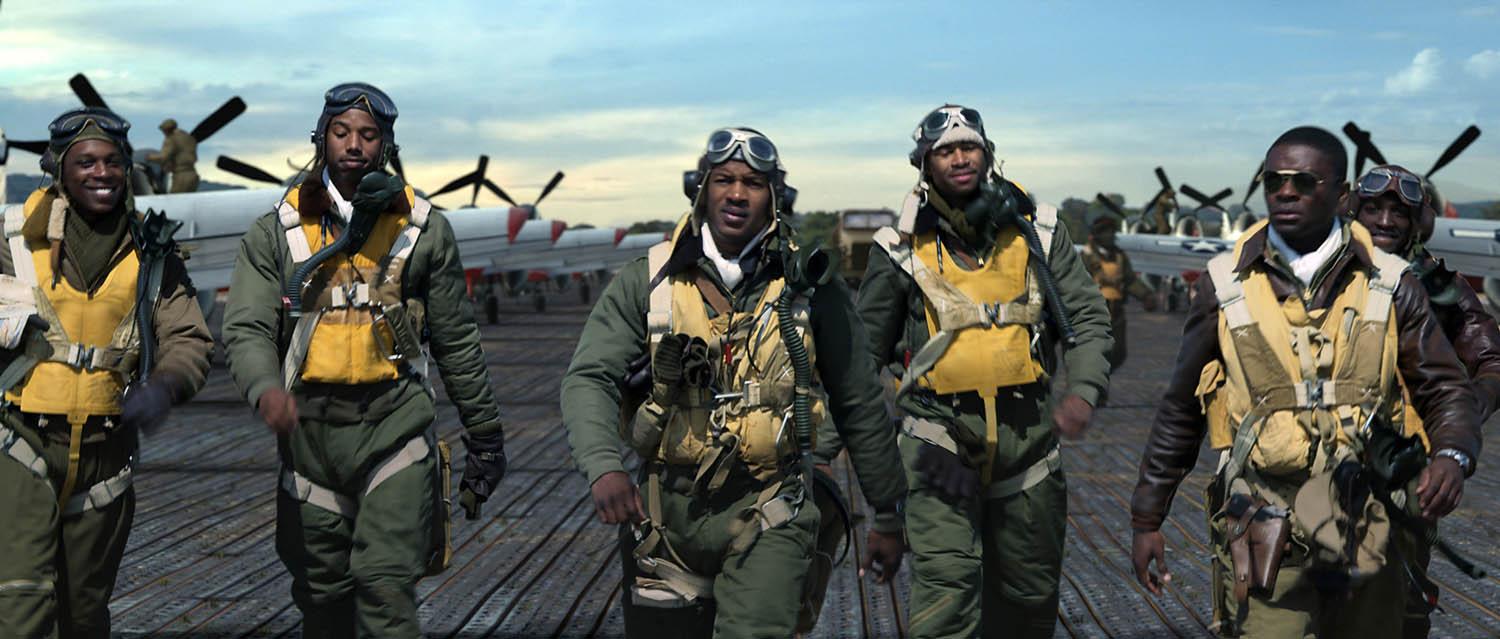A Lack of Female Leads in “Red Tails” is Historically Accurate, Not Sexist
January 28, 2012

The film “Red Tails” has two of my favorite things—one, it has a fantastic tribute to unsung black heroes that played a major role in American history.
But more importantly, it had lots and lots of gorgeous black men. All through the film I strained to focus on the plotline as I admired the curves of their full, mocha-tinted lips, the shiny waves in their haircuts, their adorable round noses. During close-ups of Nate Parker’s face, my mind wandered to Eskimo kisses.
Sorry, I had a moment.
For those unfamiliar with the story, “Red Tails,” directed by Anthony Hemingway, is about the Tuskegee Airmen, a small group of African-American fighter pilots who served in the U.S. Army Air Force during World War II carrying out missions in Italy and North Africa. Due to their phenomenal performance on duty, they inspired the desegregation of the American military in 1948.
Ironically, the very thing that kept me glued to the big screen is what has others in protest of the film. Featuring a virtually all-black, male cast with stars like Cuba Gooding, Jr., Terrence Howard, Ne-Yo and Tristan Wilds, “Red Tails” has gotten flak from viewers for not featuring any black women. Its toughest critics, such as bloggers and commentators at “Clutch Magazine,” “We are Respectable Negroes” and “What About Our Daughters” argue that it erases black women from history, questioning whether black women should boycott the film.
Now I’m up for fair representation of women in the media any day, but let’s not forget: this story is about Tuskegee airmen ─ in the battlefield ─ in the 40s. Where exactly were writers John Ridley and Aaron McGruder supposed to fit these women into the movie? In the stations building fighter jets? “Red Tails” is an action film, not a documentary. With only a two-hour time slot and a target audience of teenage boys, I imagine executive producer George Lucas was more interested in keeping the plotline focused on the complexities of war, racism within the military and treacherous battle scenes, not the airmen’s sweethearts waiting for them in America.
Besides, we finally have a major piece of pop culture recognizing one of the most unappreciated contributors to our nation’s history. Lucas pointed out in his interview on “The Daily Show with John Stewart” that after 23 years of conducting interviews, writing and rewriting scripts, “it’s one of the first all-black action pictures ever made.” Isn’t that something to celebrate? Lucas went on to say in the interview that despite the discouragement he faced from the studios saying that it wasn’t marketable because there were no major white roles, Lucas went ahead and made the film anyway, financing the $58 million picture himself because he believed in the importance and in the power of Tuskegee airmen’s legacy.
The film isn’t perfect. A few lines are a little too corny for today’s sarcastic American viewer, and there’s a storybook romance between one of the airmen and a beautiful Italian local chucked in the middle. But the fact that there aren’t any black women in the movie takes nothing away from the intention or the quality of the film, and criticizing “Red Tails” simply because of a lack of black female leads is outright petty.
Maybe next year M. Knight Shyamalan will randomly come out with a big-budget thriller about Elaine Brown and Angela Davis from the Black Panthers. Maybe the Coen brothers will suddenly become inspired by old films like “Coffy” and “Cleopatra Jones” and try to make their own film starring a badass black female action hero. It sure beats watching films with tired stereotypes of downtrodden mammies like “The Help” and “Imitation of Life.” I have no doubt that films like that could be successful; I just think it hasn’t happened yet.








